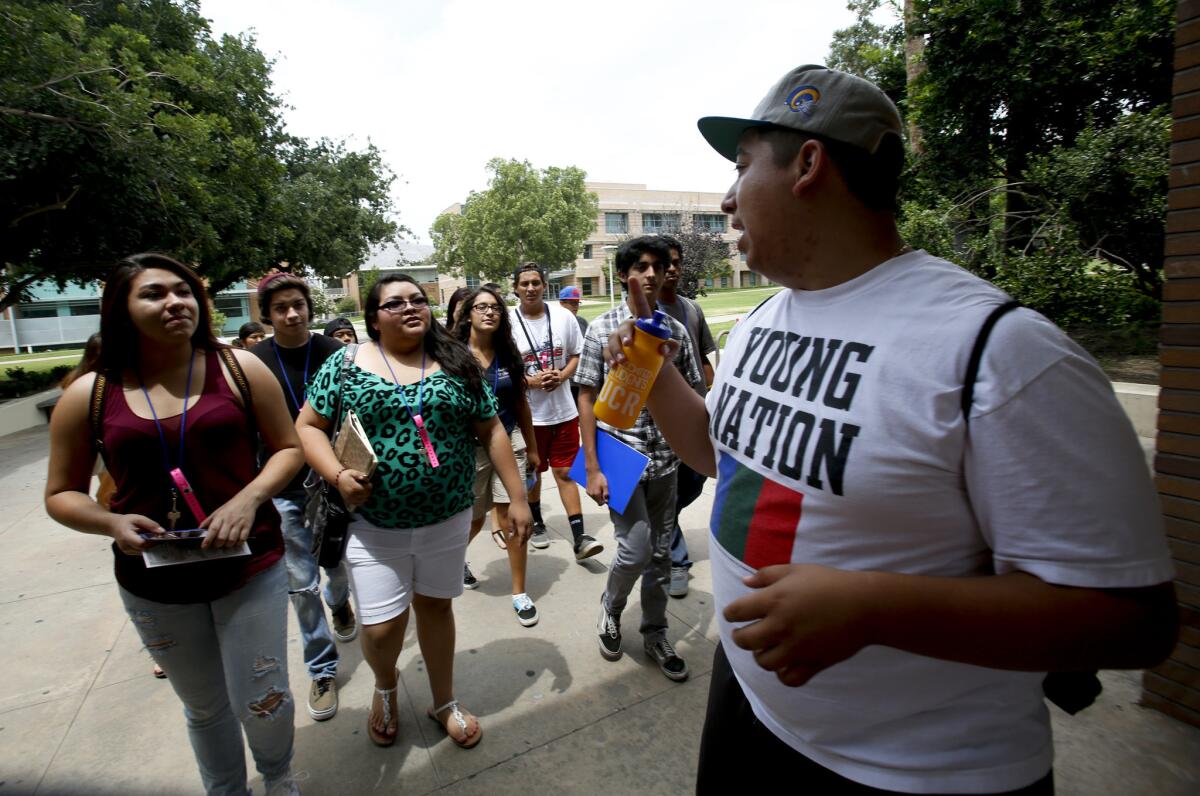On Indigenous Peoples Day, what you need to know about California’s Native students

Fifth-year student Nelson Guevara, right, gives a tour of the UC Riverside campus to Native American students in 2013.
The U.S. government recognizes the second Monday of October as Columbus Day. But across the country, cities are recognizing the immense harm that Columbus—and the Europeans who came with and after him—visited upon the people who were already in the Americas.
Instead of Columbus Day, at least a dozen cities, including Berkeley, are responding to Native American activists who demand an Indigenous Peoples Day instead. One of the issues to consider on this day, then, is the education of Native American students. Recent stories from The Huffington Post, the Atlantic and Education Week all highlight the need to improve education for these students.
One problem is that in comparing students by race and ethnicity, those who are American Indian or Alaska Natives are often left out because of how small a portion of the population they comprise. This explains why it’s hard to know how California’s Native American students performed on the National Assessment of Educational Progress, a test considered to be the gold standard for measuring learning and how it compares among the states.
Though the available information is limited, here are some statistics on indigenous students in California.
There were 36,755 Native American or Alaska Native students enrolled in public K-12 schools throughout California in the 2014-2015 school year, according to the California Department of Education. That's about half of 1% of the state’s total school population.
The small county of Alpine, just south of Lake Tahoe, has the highest percentage of Native American students by far -- 40 of its total of 89 students.
Most of the counties with the highest number of Native American students are among those with the most students overall.
Recent results from California’s first Common Core tests reflect a national trend—Native American students in the state perform worse than white and Asian students.
California's native populations are distinct from each other and those elsewhere the U.S. Still, some things are consistent nationally: Researchers have found that indigenous students across the country face alienation in the classroom, are more likely to come from low-income families, and therefore have fewer resources than other students. Native American schools on reservations, which serve a small portion of the population, often struggle with problems like low funding, budget cuts and crumbling buildings.
Reach Sonali Kohli on Twitter @Sonali_Kohli or by email at [email protected].
Sign up for Essential California
The most important California stories and recommendations in your inbox every morning.
You may occasionally receive promotional content from the Los Angeles Times.








